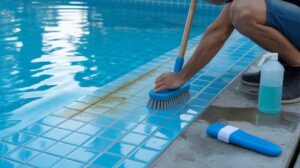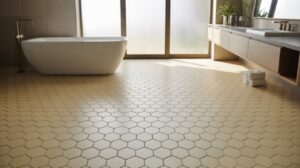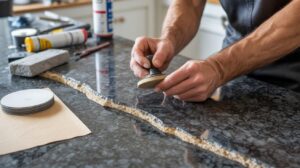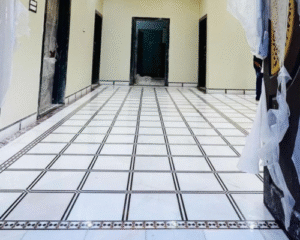How to Polish Marble Countertops: A Comprehensive Guide
Marble countertops are a stunning addition to any home, known for their elegance and timeless beauty. However, like all natural stone surfaces, marble can lose its luster over time due to wear and tear. Regular polishing helps maintain the shine and smoothness of the marble, making it look as good as new. If you’re wondering how to polish marble countertops effectively, this guide will walk you through the entire process, from preparation to post-polishing care.
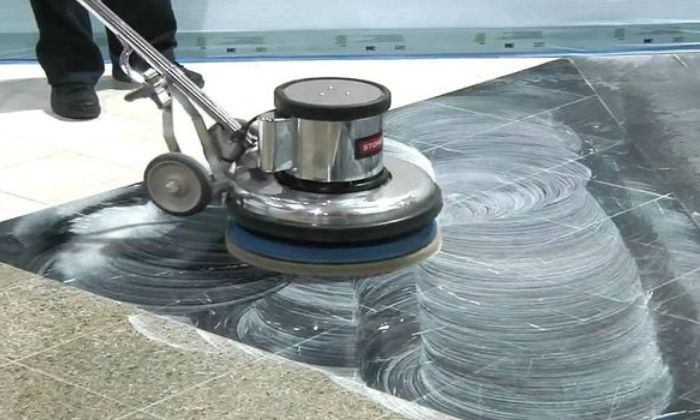
Table of Contents
ToggleUnderstanding Marble Countertops
Marble is a luxurious and durable natural stone that adds character to kitchens and bathrooms. It is composed primarily of calcium carbonate, which gives it its distinct veining patterns. While marble is known for its beauty, it is also prone to scratches, stains, and dullness due to regular use. That’s where proper care and polishing come in to restore its radiance and extend its lifespan.
Polishing marble countertops is a relatively simple task, but it requires the right tools, techniques, and patience. By following the right steps, you can maintain the beauty of your marble and keep it looking vibrant for years to come.
Preparing for the Polishing Process
Before you begin polishing, it’s essential to prepare the marble surface. This ensures that you remove any dirt, grime, or debris that could hinder the polishing process.
Cleaning the Countertop
Start by cleaning your marble countertop thoroughly. Use a marble cleaner or a mixture of dish soap and water. Avoid using harsh chemicals, as they can damage the marble surface. Here’s a simple method to clean the marble before polishing:
Damp Cloth: Dampen a soft cloth with warm water and mild dish soap.
Wipe the Surface: Gently wipe down the countertop to remove any dust, crumbs, or sticky residue.
Rinse and Dry: Use a clean, damp cloth to rinse away any soap. Then, dry the surface with a dry cloth or paper towel.
After cleaning, inspect the surface for any stains or imperfections that may need extra attention before polishing.
Gathering Necessary Tools and Supplies
To polish marble countertops effectively, you’ll need the following supplies:
- Polish Powder: This will restore the shine to the marble surface.
- Polishing Pad: For applying the polish and buffing the surface.
- Clean Cloths: A soft, clean cloth to apply and buff the polish.
- Marble Cleaner: For cleaning the surface before polishing.
- Baking Soda: If there are stubborn stains or marks that need to be cleaned before polishing.
- Dust Mop: For sweeping away dust and debris before polishing.
Make sure to choose a polish compound that is designed for marble to avoid any damage to the surface.
Polishing Steps
Now that you’re prepared, it’s time to dive into the polishing process. Here’s a step-by-step guide on how to polish marble countertops:
Step 1: Clean the Surface
The first step in polishing marble countertops is to thoroughly clean the surface. Dirt, grease, or grime will prevent the polish from adhering properly. Use a marble cleaner or a mixture of warm water and dish soap to clean the surface. Wipe the countertop with a damp cloth, ensuring it’s completely clean and free from any residues.
Step 2: Choose and Apply a Marble Polish
Once the surface is clean, it’s time to apply the marble polish. There are several types of marble polish available, including liquid polish and polish powder. Follow the instructions on the product for the best results.
- If you’re using a polish powder, sprinkle it evenly across the marble countertop.
- If you’re using a liquid polish, pour a small amount directly onto the surface.
Using a polishing pad or a soft cloth, gently rub the polish into the marble surface in a circular motion. Make sure to cover the entire area evenly, focusing on any areas that may have lost their shine.
Step 3: Buffing the Marble
Once the polish is applied, use a clean, dry soft cloth to buff the surface. Buffing helps to bring out the shine and smoothness of the marble. Work in small sections, applying light pressure to avoid streaks or marks.
Continue buffing the marble until the countertop looks cleaned and polished. This step may take a little time, but it’s essential for achieving a glossy, smooth finish.
Step 4: Removing Excess Polish
After buffing, you may notice some excess polish left on the surface. It’s crucial to remove this to prevent any residue from dulling the shine. Use a clean cloth to wipe away any excess polish, ensuring the countertop is spotless.
Post-Polishing Care
Now that your marble countertop is polished and gleaming, it’s essential to maintain it properly to keep it looking its best.
Sealing the Marble
Marble is a porous stone, which means it can absorb liquids and oils, leading to stains. Sealing the marble after polishing helps to prevent staining and maintain the shine. While sealing is not mandatory, it’s highly recommended, especially for marble surfaces in high-traffic areas like kitchens.
To seal the marble, apply a marble sealer according to the manufacturer’s instructions. Ensure that the surface is clean and dry before applying the sealer. Allow the sealer to penetrate the surface for the recommended time before wiping off any excess.
Daily and Weekly Maintenance Tips
To keep your marble countertops in top condition, consider the following maintenance tips:
Daily Cleaning: Use a damp cloth and mild soap to wipe down the countertop daily. Avoid using abrasive scrubbing tools that could scratch the surface.
Avoid Harsh Chemicals: Always use a marble cleaner specifically designed for natural stone. Avoid acidic cleaners like vinegar, as they can damage the marble.
Dust Mops: Regularly use a dust mop to remove dust and debris, preventing it from scratching the surface.
By incorporating these maintenance practices, you’ll ensure that your marble countertops stay cleaned and polished for years to come.
Professional Help vs. DIY Polishing
While DIY polishing is a feasible option, there are some situations where seeking professional help might be a better choice.
When to Seek Professional Services
If your marble countertop shows signs of deep scratches, chips, or significant damage, it’s best to seek professional polishing services, as they can restore the surface effectively. Uneven polishing or an inability to achieve a smooth, consistent shine may also indicate the need for expert help, as professionals have the right tools and knowledge to correct these issues. Additionally, stubborn stains that can’t be removed through DIY methods often require specialized treatments from a professional to prevent further damage and maintain the countertop’s appearance. Addressing these issues promptly ensures your marble stays in top condition.
Benefits and Drawbacks of DIY Polishing
DIY polishing can be a cost-effective way to maintain your marble countertop, offering the flexibility to work on your own schedule and avoid professional fees. However, it comes with certain drawbacks, including the need for time, effort, and the right tools. Without proper knowledge or equipment, DIY polishing can lead to mistakes that may cause damage to the marble surface. While it offers a sense of accomplishment, it’s essential to carefully consider the risks and challenges before deciding to tackle marble polishing on your own.
Conclusion
Polishing marble countertops is a simple process that can enhance the beauty and longevity of this natural stone. By following the steps outlined in this guide, you can easily restore the shine and smoothness of your marble surfaces. Remember to clean the countertop thoroughly, apply the right polish, buff it properly, and remove any excess to achieve a perfect finish.
Regular maintenance, such as sealing and proper cleaning, will help protect your marble countertops from stains and wear. Whether you choose to polish marble yourself or hire a professional, the key is to keep your countertops looking their best with proper care.
Frequently Asked Questions
How to Polish Marble Floors?
The process of polishing marble floors is similar to polishing countertops. Clean the floor thoroughly, apply a marble polish or powder, buff the surface, and remove excess polish. Consider using a polishing pad for large floor areas to achieve an even finish.
How to Polish Marble by Hand?
Polishing marble by hand involves applying a marble polish with a soft cloth and buffing it in circular motions. You can use a polishing pad for more control but a cloth is sufficient for small areas.
How to Polish Marble After Cutting?
After cutting, the marble surface may have rough edges. You can use a polishing compound or polish powder to smooth and shine the edges. Follow the same steps as for polishing the rest of the surface.
How to Polish Marble with Baking Soda?
To polish marble with baking soda, mix it with water to form a paste. Apply it to the marble and gently rub with a soft cloth. This method can help remove stubborn stains before polishing with a commercial marble polish.
How Do You Polish Dull Marks on Marble?
Dull marks can be polished by applying a marble polish or buffing compound directly to the affected area. Use a polishing pad to work the polish into the surface, and buff to restore the shine.


